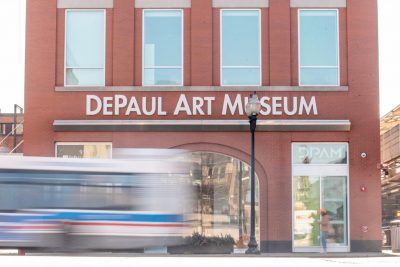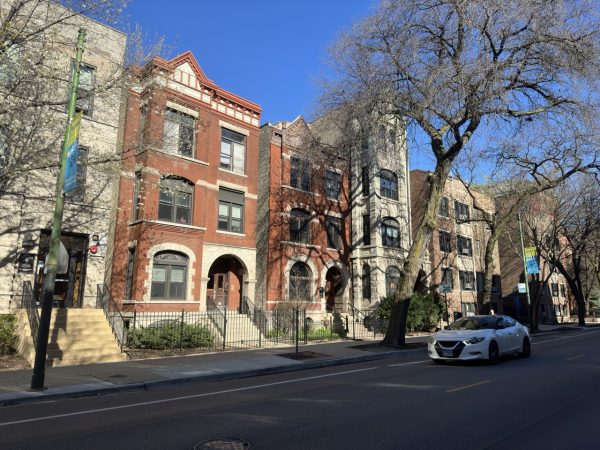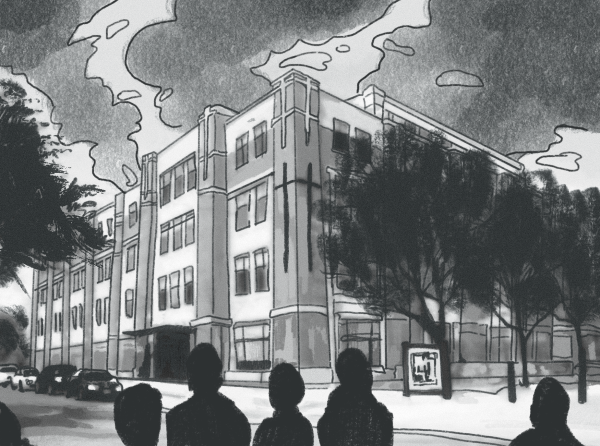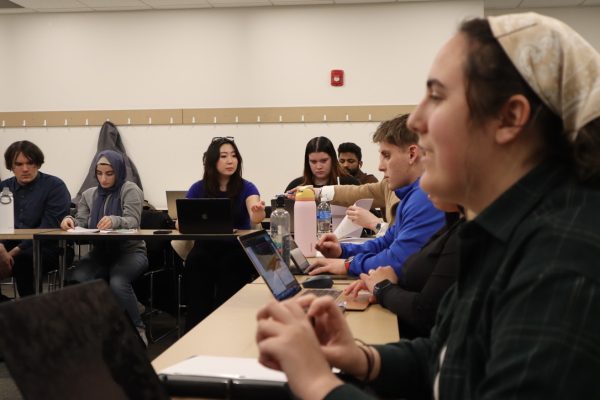DePaul Art Museum launches LatinXAmerican exhibition

The DePaul Art Museum, located in Lincoln Park.
The DePaul Art Museum is bringing a message of Latinx representation and visibility through its doors this winter with the help of 38 Latinx artists.
The LatinXAmerican exhibition is part of their three-year Latinx Initiative on Jan. 7 to help increase the representation and visibility of Latino artists.
The exhibition will run from Jan. 7 to Aug. 15 with hopes to transition in person by the spring.
The LatinXAmerican exhibition derives from the museum’s three-year Latinx initiative that started earlier in 2020 by former Director and Chief Curator Julie Rodrigues Widholm to advocate for a greater Latinx presence in museums, collections and public programming.
Laura-Caroline De Lara, interim director of the DePaul Art Museum, said the concept core of the exhibition came from a 2018 study of 18 major U.S. art museums that showed 2.8 percent of artists in their collections are Latinx.
“Given that Chicago is a hub of the Latinx community, it made a lot of sense to focus our efforts on increasing Latinx representation in our programs and galleries,” De Lara said.
The exhibition will feature the works of 38 Latinx artists from across Chicago, the U.S. and Puerto Rico. Different forms of art mediums like paintings, video work, sound pieces, photography, sculptures, installations and works on paper will be featured at the eight month exhibition.
De Lara said a large role of the exhibition is to support the community of Latinx artists that are underrecognized often in the museum field. The mission of the DePaul Art Museum in the LatinXAmerican exhibition is to provide a safe space and a platform for artists to showcase their work.
“This is for them to really have a voice because part of what we are wanting to do is to learn from the Latinx stories and that community specifically,” De Lara said. “We want to have a moment where Latinx communities can seem themselves representative in a museum space and feel a sense of belonging.”
Like De Lara, Ionit Behar, an assistant curator of DPAM, who joined DePaul Art Museum in August, said she is thrilled to be part of an initiative aiding to increase Latinx representation like the LatinXAmerican exhibition.
“I am truly so excited about what DPAM is doing,” Behar said. “I think it’s something that is lacking in institutions in general and mostly in Chicago. There is no other institution who is doing something like this, of showcasing and putting in the center Latinx artists.”
Behar said one of the goals of DPAM as a museum is to look on who has not been represented and given enough honor.
“The purpose is to support and give more visibility to incredible Latinx artists that haven’t been recognized as they should so far,” Behar said.
But, she mentions that this exhibition is just the start.
“Although we are showing 38 artists there are still many more that we didn’t include — that are wonderful and deserve space and to be seen,” Behar said. “I’m hoping that this is just the beginning.”
DPAM hopes to continue the Latinx conversation after the exhibition by adding pieces of artworks to their collection by the 38 Latinx artists.
“We want to continue to have those conversations past the exhibition itself and in years to come when we have future exhibitions, classes, visits — we can continue the conversation through the art work,” De Lara said.
For Latinx artists like DePaul student Lupe Casas, her art is a method she uses to express her “Latinidad.”
Casas has been using her social media platforms to highlight her pieces because she says she wants to see more of her culture in mainstream media.
“It’s really a great opportunity to use my identity in my art since I don’t see it being done already,” Casas said. “[…] and the latinx community uses vibrant colors and there’s just so much that can be done.”
She says she is looking forward to seeing representation visible from all cultures in this exhibition.
“As a whole, I’d like to see what the exhibit comes up with and if it can really tell a story,” Casas said. “I feel like I see a lot of amazing pieces that are super detailed and inspired but I’d really like to see this initiative tell a story, since there is a very similar LatinxAmerican story throughout cultures.”













